
Today (March 28, 2017), AncestryDNA launches a new tool called “Genetic Communities.” Genetic Communities (GCs) are groups of test-takers who are connected through their DNA because they descend from an identified recent and distinct population of ancestors (somewhere around 1750 to 1850, in my experience).
There is a lot to explore with these GCs, so this will be just an introduction rather than a complete guide.
At 2 PM EST this Thursday I’m doing a webinar for Legacy Family Tree Webinars called “Exploring AncestryDNA’s New Genetic Communities.” You can register at any time. If you’re reading this after March 30, 2017 and you missed the free webinar, you’ll be able to watch the webinar if you are a Legacy Family Tree member (and you should be!).
- I’ve compiled a PDF of the 300 or so Genetic Communities, with the associated hierarchy. It can be downloaded by clicking HERE. Feel free to use and share. See the bottom of this post for more information about the PDF.
- Be sure to join the great new Facebook group “Genetic Genealogy Tips & Techniques” where I’m sure we will be discussing GCs a great deal!
Genetic Communities – the Science
The science behind GCs is pretty impressive. Much of it has been published in a peer-reviewed journal called Nature Communications. If you read the paper (“Clustering of 770,000 genomes reveals post-colonial population structure of North America“), be sure to read the Supplemental Material too, it’s full of great information. For short summaries of the journal article, see:
- “Nature Communications Publishes AncestryDNA Breakthrough on Genetic Communities” and
- “770,000 Tubes of Spit Help Map America’s Great Migrations.”
AncestryDNA has also created a white paper for GCs: “Genetic Communities™ White Paper: Predicting fine-scale ancestral origins from the genetic sharing patterns among millions of individuals.”
Finding Your Genetic Communities
Most people will have at least one GC. You’ll find your GCs on your main DNA page, right below your ethnicity estimate summary:
As you can see, I have two GCs. Clicking takes me to the next page to see them:
These align well with my known ancestry, which has plenty of Early New York and New England ancestors. You can then narrow in on a single GC to see the “Story” page:
Clicking on one of the time periods shows more information, including some of your ancestors from your tree (if you have one attached to your DNA results!):
The “Connection” page is my favorite, however. Clicking on “Connection” under the title of the GC takes you to this page:
This shows you how many of your matches are included in this GC (here it is 327), how many people total are in the GC (238,826), and the confidence level that I’m a member of the GC.
At the bottom of the page, you’ll get a link to see your matches included in this GC, and a list of surnames that are enriched in this GC:
Clicking “View All Matches” actually takes you back to your match list with a new filter applied, the “Genetic Communities” filter:
This filter will allow you to select only those of your genetic matches that are also assigned to that GC. This could be a very useful tool, for example, to begin to cluster your matches. For example, people with holes in their trees or adoptees may use these filters to assign matches to groups.
BUT A NOTE OF CAUTION!!!! Just because a genetic match shares a GC with you does not establish that the GC is responsible in any way for your shared ancestry! NO! And, just because you share a GC with a parent and with a match does NOT mean that you can definitively label the match as maternal or paternal!
These are good hypotheses, of course, but it will be very important to avoid making unsupported conclusions using GCs.
As an example, when I select the filter “Early Settlers of New York,” my genetic match list looks like this:
- Children
- Mother
- Maternal aunts/uncles
- Paternal 2Cs
- Maternal 3C
- Paternal 3Cs
- And so on…
So, clearly the “Early Settlers of New York” filter is one I have to be careful with (and with 238,826 members in the GC, that’s not too surprising!).
Important Points About Genetic Communities
Thinking about GCs, there are several major points I want to make:
First, it is important to keep in mind that this is the first version of a product that will continue to evolve. Just like in the early days of atDNA testing when matches were few and distant, GCs will be broader and fewer. Over time, GCs will narrow in both space and time, and their numbers will increase. It may be possible that they will narrow in on counties or villages or families, eventually, if enough people test. Accordingly, we shouldn’t expect to have all of our possible GCs yet.
Second, those of us with Colonial America or Western European roots should be careful when evaluating GCs to avoid a bias that could develop due to our extensive genealogical records. We tend to have very good records, meaning that our trees are not a huge mystery around 1750-1850 (although I know I have plenty of holes, they often aren’t enormous ones). However, there are innumerable populations in the U.S. and abroad that have terrible records, and GCs will provide important clues. Often, it may be the only information they ever have, and it can sometimes narrow in on very small areas.
As an example, I have African and Native American DNA that traces back to my maternal grandmother in the Honduras. Unfortunately, I know nothing about these African and Native American ancestors because the records are so poor. However, several of my maternal grandmother’s descendants have GCs that represent African Caribbeans, which supports my hypothesis that my African DNA came from Africans brought to the Caribbean during the slave trade. Considering the poor records in that area, GCs and tools like it will likely be the best support I ever get for these conclusions.
I think there will be many people that have holes in their tree in 1750-1850 who will use this tool as clues to direct some of the research.
Third, I am beginning to suspect that GCs are better than ethnicity estimates. Unlike ethnicity estimates, where I recommend that people ignore sub-continental categorization, GCs are almost all sub-continental. And, in my opinion, GCs are based on much better science than ethnicity estimates. Although I can’t rely on sub-continental ethnicity estimates, I will likely rely on sub-continental GCs. Indeed, GCs may even largely replace ethnicity estimates someday, which I think would probably be a positive development.
As an example, I’m working with an adoptee who has a large percentage of Eastern European ancestry, but that is as distinct as the prediction gets. However, the adoptee has two Eastern European GCs that potentially narrow in one region that is located largely within a single country and another that spans a couple of countries. This may be extremely beneficial information for the adoptee.
Last-Minute Genetic Community Tidbits
- You do NOT have to have a tree or a paid subscription to get Genetic Communities. However, there are benefits to having a tree linked to your DNA results when using GCs (the tool will pull in people from your tree onto the map where you are exploring a GC).
- There are more than 300 Genetic Communities as of the launch date.
- Although Genetic Communities are annotated with user trees, they are annotated using thousands of user trees. Additionally, they are annotated using primarily location information from those trees. Although poorly-sourced and -researched Ancestry trees are always a concern, the sheer number of trees (and the fact that it involves locations which tend to be more accurate) means that errors are unlikely to impact a GC.
- Be sure to see the Genetic Communities Help and Tips section here: https://www.ancestry.com/cs/dna-help/communities.
- I’ve compiled a PDF of the 300 or so Genetic Communities, with the associated hierarchy. It can be downloaded by clicking HERE. Names for about seven of the GCs are missing because I was unable to hover over the GC to reveal the name in the “View All” mode. However, I left them blank so you could write them in later. I believe we can quickly crowdsource those missing names.
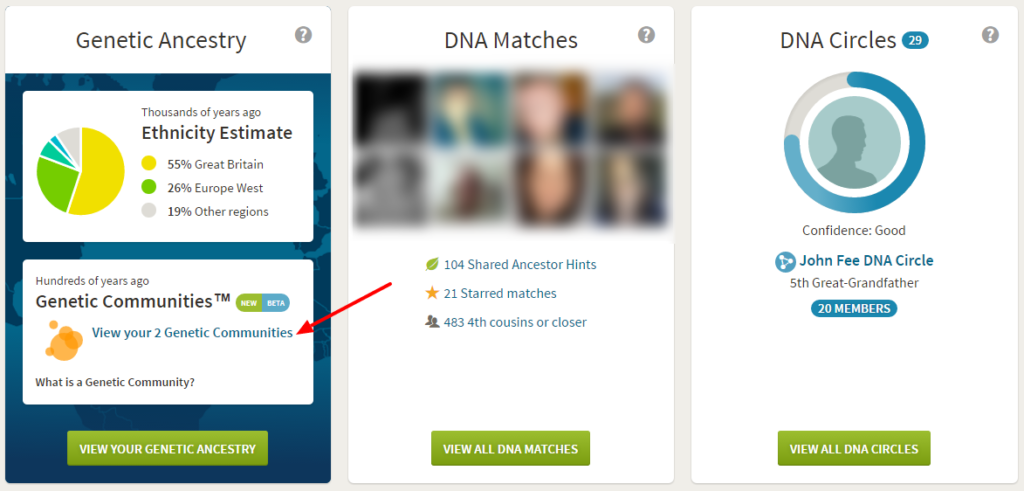
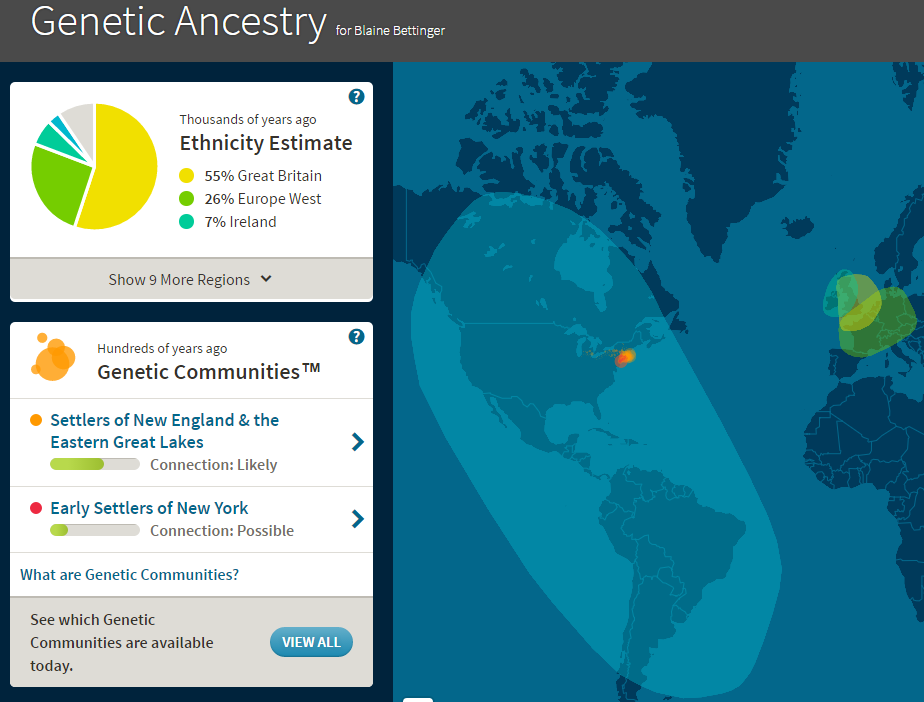
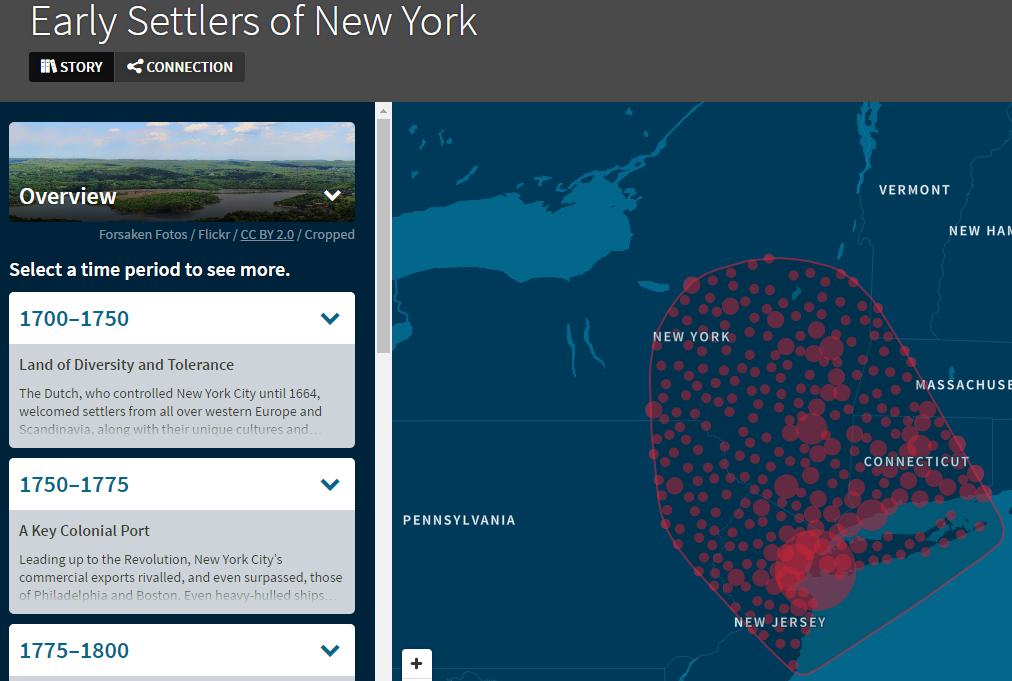
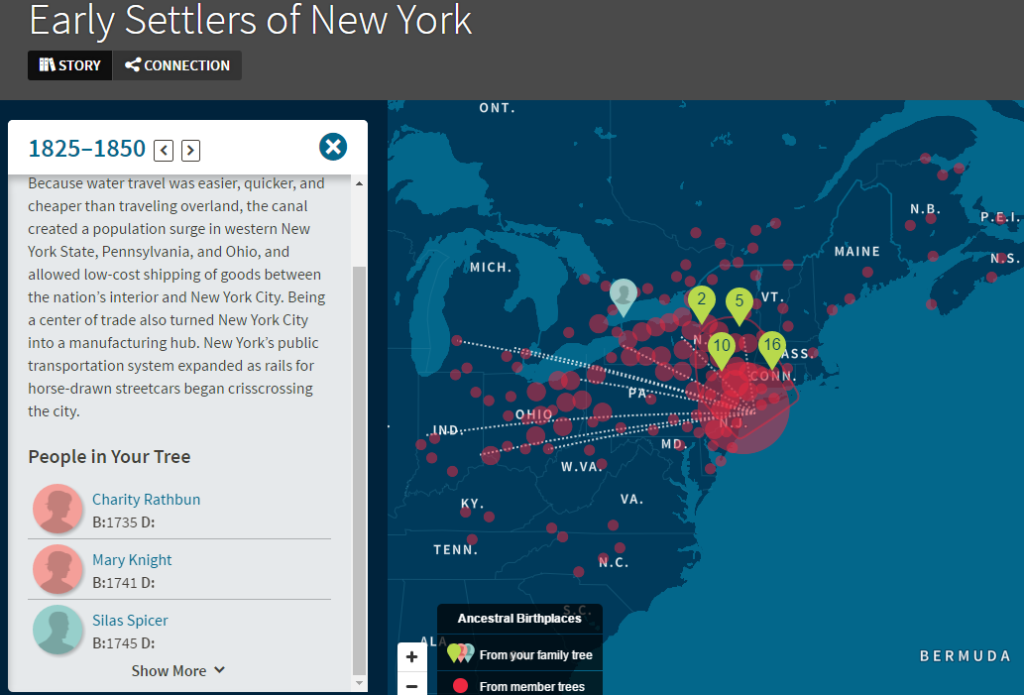
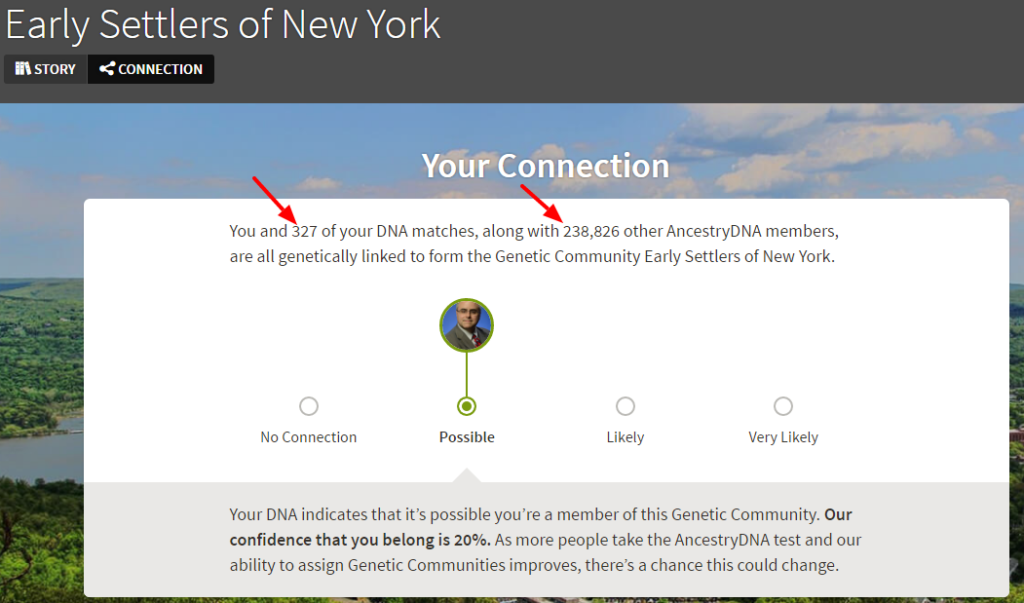
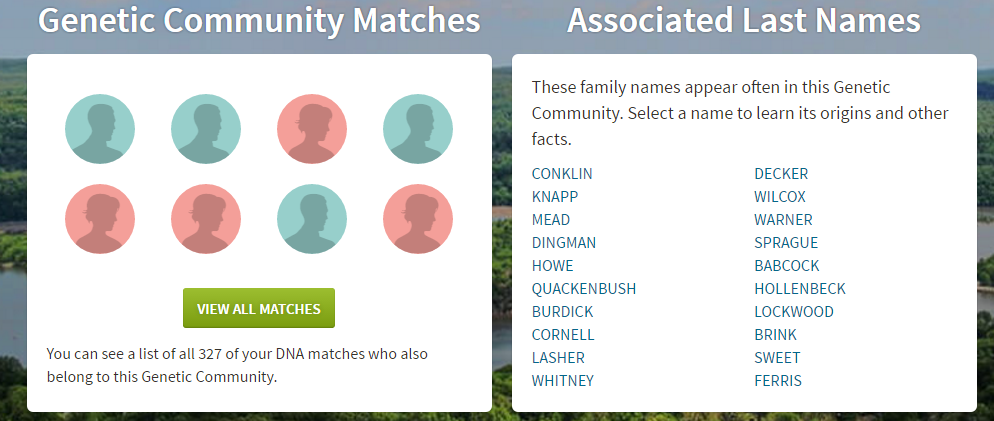

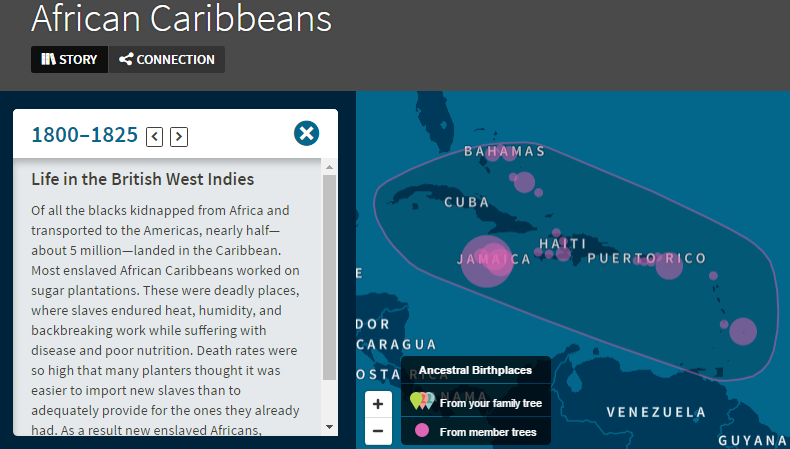
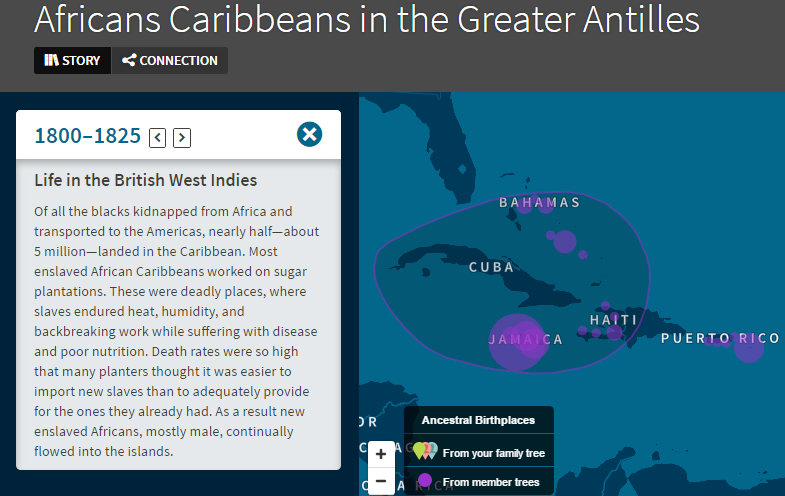
Thank you. Look forward to the webinar.
My numbers are interesting. I have 22,900 dna matches at Ancestry, yet I have only 935 matches which are genetically linked to form the Genetic Community Early Settlers of Midwest and Virginia (95% confidence level).
I guess that does not include Plymouth Rock? And does that indicate most of the other dna matches are NOT Colonial America, and came later? Just curious.
I will answer my own question. The reason I have only 935 matches in the Genetic Community is because most of my 22,900 dna matches do not have trees…………Just another “blonde” moment.
I just checked out the new feature, live it! Narrowed down and divided my matches up so I can sort them better. I have contact with many in an isolated area of West Donegal in Ireland. The grouping for that region culled 97 test matches, some I know, most I don’t. Very exciting!
I just checked out the new feature, love it! Narrowed down and divided my matches up so I can sort them better. I have contact with many in an isolated area of West Donegal in Ireland. The grouping for that region culled 97 test matches, some I know, most I don’t. Very exciting!
Thank you for this. I will go see if what I have noticed is what AncestryDNA sees.
Thank you for this. I’m looking forward to learning more about this topic.
I’m not so in love with this new Ancestry tool. In my Ancestry Genetic Community, the closest genetic match is my daughter; no half-siblings, regardless of maternal/paternal, none of my first and second cousins, only half of my third cousins (those with the highest amount of cMs are missing), and my maternal fourth cousins are missing from my community matches. In fact, virtually all of my maternal matches are missing. Also, most of what I am left with are matches with no family trees. So how can this be useful? My maternal siblings are in one Irish Group and I am in another… and our trees, being identical and having the same DNA matches at this point, go back to the mid 1700s with the exception of our Great-great Granny whose line goes back about 20 generations (and is all Scottish). As an adoptee, if I were still looking for family, I would either be incredibly confused or I would be able to readily identify an unknown parent because this has brilliantly excised my closest maternal matches. Great.
To say I am intrigued, confused, and disappointed would be an understatement. Is my paternal DNA really the only one that counted here??? I actually have many more maternal matches that were easier to find and to use.
I also would like to note the overlap between “Ulster” surnames and “Connacht” surnames; these surnames also figure in my family trees. So how is it determined that I am “Connacht” Irish and my half-sibs are “Ulster” if we all share these same surnames? with the exception I also have these exact surnames ALSO in my paternal tree? This seems, to me, like a numbers game: 1 from column A and three from column B=Connacht Irish regardless of the fact that half of my family is Ulster Irish by way of Glasgow (and my haplogroup is K1c1b).
I understand this will be sorted out in future; it’s definitely early days. But, in the meantime, I am unhappy that my closest DNA family matches…with the exception of my daughter… and I aren’t in the same community, regardless of which side we are on. And the folk that did manage to be sorted into my community are mostly from my bio father’ side. I’m glad I didn’t have this to distract my successful adoptee-looking-for-families search.
PS: My half-sibs are Polish. Their grandparents, on both sides, are Polish…and that is their second Genetic Community. I’ve built that tree for them back five generations and there is no Irish to confuse the issue. Just sayin’.
ditto that disappointment, my mother, my sister and myself are each in different irish groups, what goes with that?
I absolutely love this new change. I don’t know my bio-father, and I took the Ancestry test early last year and found out that my father is Puerto Rican. At that time Ancestry.com didn’t list that population as Puerto Ricans, I learned who they were by the matches. So now with this new community we are listed as Puerto Ricans, how exciting. Unfortunately, I’m still waiting on a higher match to get more clues for my search.
The only problem I have is your surname list, it can stand for some improvement. The history is nice, but for someone like me who is searching without a name, the surname list is extremely important. Ancestry gives my a list of names. What does that mean? What is the order? What is it based on? How many people are connected to those names? What is the highest, what’s the lowest? Which family names matches me the highest? What about matches? I need to know more than just a list of names with no order. One more thing, the name “Rivera” is the only name that’s listed multiple times on my list (3X). Why? There is no explanation.
For the vast majority of established researchers the GCs in their current form will be entirely useless. I already knew that my ancestral lines were early settlers in the deep south. I am also well read on the history of the region, so the little historic blurbs are more annoying than interesting. What I really need is a map of how the DNA I share with my matches can be associated with actual geographical locations. In other words “You share 30 cM with these matches with ancestors in Pittsylvania Co., VA'” along with some kind of ‘heatmap’ showing where my DNA tends to clump geographically.
I like your idea very much. A heat map would help me isolate to a specific region to solve brick walls. I live in a vicinity which has seen a big influx of immigrants. I am the second generation. This melting pot is the community that I was assigned to. It offers me no insight about the origins of my ancestors, and does not correspond to my known closest cousins communities. Ancestry is saying with the leaf tool that my matches and I share great-grandparents but with the genetic communities tool that we have no genetic community association. As someone who helps adoptees, I am very concerned about the misleading information.
I’m a bit confused on one aspect of Genetic Communities. It’s great to sort my DNA matches by community, but in my sorting options are communities that are not listed in my own genetic communities. Is this just because a large number of my matches fit into the community and therefor it’s likely I fit into it? Am I part of the community and it’s an error on the communities pages?
As of mid-October 2017, there is a new genetic community for South Africans (present in people with Dutch and British colonial ancestry). As an indication of size, it says under someone’s DNA Story: “You and 1000+ of your DNA matches, along with 6800 other AncestryDNA members, are all genetically linked to this migration through shared ancestry.”
Will this testing reveal the parent of a child believed to be adopted but never told?
Why is my genetic community incorrect? I inherited half of my father’s DNA. All of his family and ancestors were early settlers in the Atlantic States, NY, NJ. My father had no relatives in the South. Absolutely none migrated to the South. My DNA matches my 1st cousins, etc. in NY and NJ. My only genetic community shown is in the South, which is where my mother’s family migrated. My brother and sister’s genetic communities show the Atlantic States area correctly.
Tracing migration patterns is the core aim of the project. And so many DNA records were already lost with the end of cold war. My parents worked in the laboratory then and tested DNA samples of various nationalities.
https://writemyessaytoday.net/